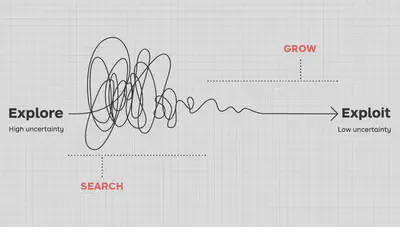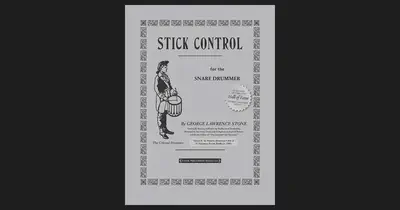I Joined a Band as a Drummer!
Milestone unlocked: My first band
I’m part of a few facebook groups where people post about looking for jam partners or asking for information about where there’d be live music playing in Brussels.
I made a similar post in one of these groups asking for information about a place I can book a practice room that contains a drum kit. As you would have it, by a matter of pure luck, I got in touch with someone looking for a drummer. It seems he happened to see one of my post looking for a rehearsal room and decided to get in touch for a few projects he was part of.
It’d already been a while I’d been looking to play along with folks to get to that next level as a musician. Practicing and improving your techniques is something I really enjoy but at the end of the day, we play our preferred instruments to make Music. This was something my drum teacher always told me, that all technique and tools at our disposal ultimately are only meant to serve the Music.
Moreover, there are certain aspects of playing music, which only come from playing with each other. There is an element of communication, improvisation and when these elements come together in a natural manner, there’s nothing that’s more satisfying.
A new reason to practice, a different focus altogether!
I would be the first to admit that I can get quite geeky about percussive instruments in general. For about 8 months I picked up the tabla, a percussive instrument prevalent in the musical tradition from the subcontinent. There’s a few obvious reasons to be fascinated by the tabla. I grew up listening to the instrument and had a natural connection with the rhythmic tradition. Secondly, this is a percussive instrument that can be tuned in different pitches, making it sound like a melodic instrument in the hands of the right person. Go check out this video by the Maestro Zakir Hussain if you want to see that in action. However, what’s really the most amazing part of the tabla is that the tradition requires one to master the rhythm vocally before attempting to play it on the instrument.

Each sound that tabla can make (and there’s a lot of them), has been assigned a vocal counterpart. This is a very rich concept can be adapted and applied to the drumset setting and leads to some very creative practice ideas!
Explore vs Exploit: When to know you need to keep digging in deeper
While it’s been such a fantastic journey to learn about the Tabla, I eventually had to put it on pause because I saw I was spreading myself too thin. As a weekend warrior of sorts, when it comes to playing my instrument, you can’t let your limited number of practice hours be dispersed across different activities. You can, ofcourse, but there is a very hard tradeoff to be made here when you’re counting on seeing progress in your playing, as a way to stay motivated in your practice sessions.
Making that decision wasn’t easy. I have the impression human beings hesitate before committing to something. We want to keep our options open. Why? Maybe because it’s easier to make mistakes as a beginner but more difficult to show up when you realize how much incremental effort’s really needed to realise something. Taking the tabla as an example, I would have had to train my fingers to be able to articulate the notes properly. This is an exercise that develops slowly, as you develop the muscle memory over sustained and focused practice. I saw this from my own experience when I started playing the drums using the “Open handed” style. In a nutshell, this style implies that a right handed player would need to develop their left, weaker, hand to lead on the instrument. It took me months and even a couple of years before I started to notice my left hand feeling on par, or at least in the same category, as my dominant right hand. There’s a number of advantages to being able to play this way and having gone through the steep learning curve, I can now take advantage of a higher degree of ambidexterity on the drum kit. Had I been unable to commit to this approach at the start of my drumming journey, I wouldn’t have been able to meet this drumming milestone.
However, while it is imperative spending time in the Exploit phase, honing in on skills slowly and steadily over time, you cannot ignore the Explore phase. Indeed, trying the tabla or even Open handed drumming when I first started was the result of the Explore phase. It was something that I decided to move into the Exploit phase once I decided committing to it.
Explore periods can have a wider spectrum range than you might think
At one point, I thought that this stage is about looking into big ideas. As seen in the figure below, that an Explore phase, necessarily entails a high amount of uncertainty. I’ve come to see this phase a bit differently more recently.

I believe that we are constantly walking on the blurry line between Explore and Exploit. In digging deeper, in the Exploit phase, you start to notice more and more details, nuances, that were simply impossible for you to perceive earlier. This is a fascinating observation I’ve made in many areas of my life and not just drumming. In some ways, it’s about being open to coming across new paths along the way you didn’t know existed before you start on your way. This is most self-evident to me when I have a 20 minute session of playing a particular groove. While playing this obviously monotonous pattern, my consciousness is constantly evolving. Where ten minutes ago, I couldn’t move my limbs in harmony, and I’d constantly be trying to lock in, say my right hand and left foot, the coordination, suddenly, those limbs start to move subconsciously. I’m not even thinking of it anymore, which leaves me the mental space to consider other aspects of the groove: Am I playing at the right volume, what’s my right foot doing and how does it “feel” striking the bass drum, etc.
I always try to enter this space during a practice session. This is where, as drummers would say, you go from thinking the groove, to feeling it in your body.
You can always choose to come back to something - it won’t go anywhere
When I first started drumming, I went into a phase of buying all the classic books I saw. I wanted one on Progressive drumming essentials, one on basic rock grooves, one on coordination, etc. There was so much I didn’t know that it was difficult knowing where to start and I had the tendency to rush moving onto new material before really capturing the essence of the material. This anxiousness, I now realise, was mostly because I was more concerned about where I needed to be by a given point in time. I thought I could plan up front a year, or more, into the future. However, it really doesn’t work that way. All drummers know the book Stick Control, by George W. Lawrence Stone.

This book has forty pages or so. But this isn’t a book you can “finish”. Each page of this book are sticking patterns, indicating a rhythm to play and the hand that needs to play it. Almost 4 years into drumming and I keep revisting this book with a fresh pair of eyes. It’s a timeless book and a source of endless material. At this point today, I can honestly say I haven’t made it past the first four pages and I still think I got so much out of it!
However, previously, I’d always want to move on to the next book, and then the one after that. Ofcourse, this was before I learnt that the Explore phase doesn’t have to be about taking on a new book to practice material, but really imbibing the material in as many different ways as you possibly can. That’s the best way I’ve found to make the material stick - so that you can improvise and the material you’re practicing actually shows up in your playing.
There’s plenty of time for me to revisit those other books I have planned for. That’s where faith comes in. I know I’d pick them up when the right time comes in.
Share this Article:
Subscribe to my monthly newsletter